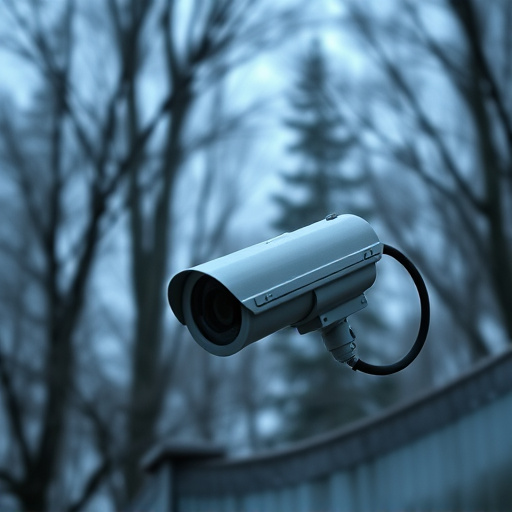When setting up a wireless hidden camera network, start with a system that operates without internet connection for enhanced privacy and security. Place the base station centrally, install the camera, configure app settings, test motion detection, and ensure offline access through LAN setup or user-friendly apps. Secure your network by changing default SSID and passwords, enabling encryption, and regularly updating firmware to protect data from online threats.
Setting up a hidden camera network without internet connection can seem daunting, but with this step-by-step guide, you’ll have peace of mind in no time. Learn how to choose the right wireless nanny cam system, set up your base station and camera, establish a direct connection between devices, configure the app for remote access, and finally test and secure your network. Say goodbye to hidden risks and hello to a smarter home with a Wireless Nanny Cam Without Internet Connection.
- Choose Wireless Nanny Cam System
- Set Up Base Station and Camera
- Connect Devices Without Internet
- Configure App and Access Remotely
- Test and Secure Your Network
Choose Wireless Nanny Cam System
When setting up a wireless hidden camera network, the first step is to choose a reliable Wireless Nanny Cam System. Opt for a model that operates without internet connection for enhanced privacy and security. These systems typically use RF (Radio Frequency) or IR (Infrared) signals to transmit footage, ensuring data stays local and secure.
Look for features like motion detection, night vision, and cloud storage options, depending on your specific surveillance needs. A quality Wireless Nanny Cam should offer clear video quality, easy installation, and a user-friendly mobile app for remote access, allowing you to monitor your surroundings anytime, anywhere.
Set Up Base Station and Camera
To begin setting up your wireless nanny cam without internet connection, start by placing the base station in a central location where it can capture the desired area. Ensure it’s near a power outlet to keep it operational. Mount the camera securely, ensuring it has a clear view of what you wish to monitor. Connect the camera to the base station using the provided cable, aligning with the instructions in your user manual for seamless integration.
Once connected, configure the settings on the base station app, adjusting sensitivity, motion detection zones, and notification preferences according to your needs. Test the setup by triggering motion and verifying the camera’s response through live video feeds and alerts on your mobile device, ensuring a reliable wireless nanny cam network without internet reliance.
Connect Devices Without Internet
Many users opt for a wireless nanny cam without an internet connection, prioritizing privacy and security. Since these cameras aren’t linked to your home network or cloud services, they provide a more discreet surveillance solution. To connect devices without internet, you’ll typically use a local area network (LAN) setup. This involves creating a small, private network between your camera and the monitoring device using an Ethernet cable or Wi-Fi.
By setting up a LAN, you can view live footage and access recorded videos directly from your smartphone, tablet, or computer without relying on the internet. This method ensures that all data remains local and protected from potential online threats, making it ideal for those seeking robust security measures for their home or business.
Configure App and Access Remotely
After setting up your wireless hidden camera network, it’s time to configure the app for remote access. Many modern security cameras come with user-friendly apps that allow you to monitor your surroundings from anywhere with a smartphone or tablet. These apps typically offer features like live streaming, motion detection alerts, and even two-way audio communication. To set up remote access, download and install the corresponding app on your mobile device from the app store. Then, follow the instructions in the app’s setup wizard to connect it to your camera network.
Once connected, you can log in to the app using your credentials and start viewing your camera feeds remotely. This feature is particularly useful for a Wireless Nanny Cam Without Internet Connection, as it allows you to keep an eye on your property or loved ones even when you’re away from home. You can adjust settings, receive alerts, and interact with the camera all through the app, ensuring convenience and peace of mind.
Test and Secure Your Network
After setting up your wireless nanny cam, it’s crucial to test and secure your network to ensure optimal performance and privacy. Since many modern wireless nanny cams operate without an internet connection, begin by verifying that your camera can establish a stable Wi-Fi link within your desired range. Place the camera at various locations to check signal strength and quality, ensuring no obstructions or interference from other electronic devices.
Next, secure your network by changing the default SSID and password for both your router and camera. Use strong, unique passwords to prevent unauthorized access. Enable encryption protocols like WPA2 or WPA3 to add an extra layer of protection. Regularly update your router’s firmware and camera software to patch any security vulnerabilities, ensuring your wireless nanny cam network remains safe and reliable.
Setting up a wireless hidden camera network, especially one that operates without an internet connection, offers peace of mind and enhanced security. By choosing the right system, installing the base station and cameras, connecting them seamlessly, configuring your app for remote access, and finally testing and securing your network, you create a robust surveillance system tailored to your needs. Remember, a Wireless Nanny Cam Without Internet Connection is not just about privacy but also independence from potential online vulnerabilities.
